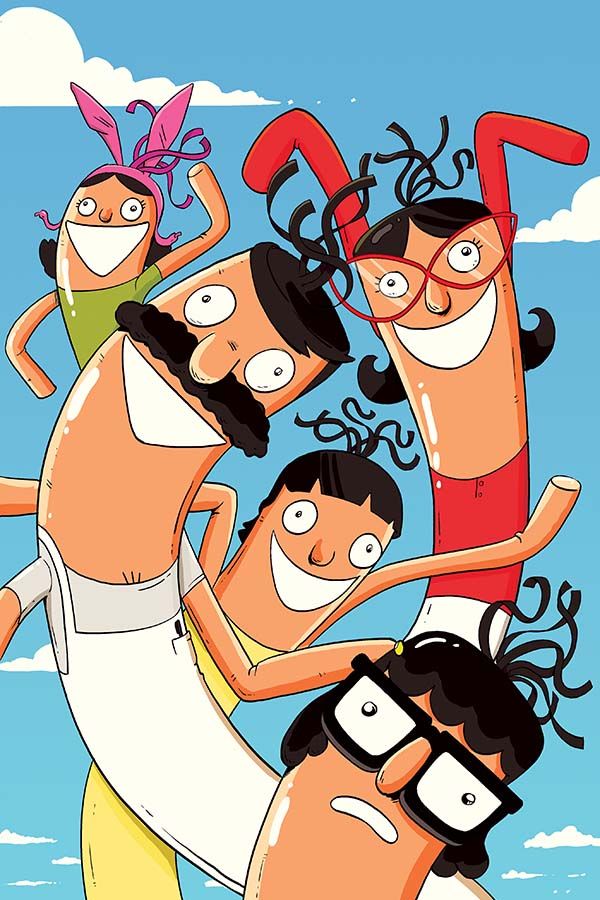[Editor’s note: Each Sunday, Robot 6 contributors discuss the best in comics from the last seven days — from news and announcements to a great comic that came out to something cool creators or fans have done.]
Since sports have kept Bob's Burgers off the air for the past few weeks, this week's Bob's Burgers #3 (from Dynamite) was especially welcome. It's a potent distillation that uses the comics format to capture the show's unique tone and energy.
The issue's three stories each focus on a different Belcher child. First, a tale of erotic friend fiction (written by production coordinator Rachel Hastings, drawn by Damon Wong, and colored by Derek Schroeder) casts Tina as a Wild West sharpshooter who saves the butt -- emphasis on "butt" -- of a fellow gunslinger. In the third story (written by Chad Brewster, drawn by Frank Forte, colored by Schroeder), Gene unleashes an amphibian plague. Both of these are entertaining examples of short subjects which work well in a comics setting. Wong's artwork in the first story uses thicker lines and a slightly softer approach to the characters to highlight the feeling that this is something from Tina's imagination. Conversely, in the third story Forte and Schroeder's fidelity to the show's look helps emphasize the over-the-top nature of Gene's predicament.
However, the middle story really stands out. Written by Brewster and drawn, lettered, and colored by Kat Kosmala, "Who Forted?" finds Louise rebuilding not just her lost cardboard-box fort, but crafting an entire discarded-container community behind the restaurant. At five pages it's the shortest of the three ("Trick Shot Tina" has 8 pages and "Guys And Frogs" 7) but Kosmala's dense layouts and Brewster's manic dialogue stuff it full-to-bursting. Page two has the fewest panels -- three small ones across the top tier, and a fourth taking up three-quarters of the page -- but that fourth panel is a shot of the fort showing about 15 boxes and 13 characters (including a horrified Bob). Kosmala also gives each character a distinctive lettering style -- Louise gets the most expressive, naturally -- and piles on the exaggeration, again especially for Louise. Details like corrugated panel lines and Escher-flavored designs further complement the story. Although It's not that deep of a narrative -- Louise goes too far, there are brief complications, it all ends with an '80s-movie reference -- it's a well-constructed visual treat, and a good example of a story perhaps best told through comics.
In its first three issues, Bob's Burgers has been a fine translation of the TV show; but if it can tap into this kind of creativity consistently, it'll be a great comic as well.


